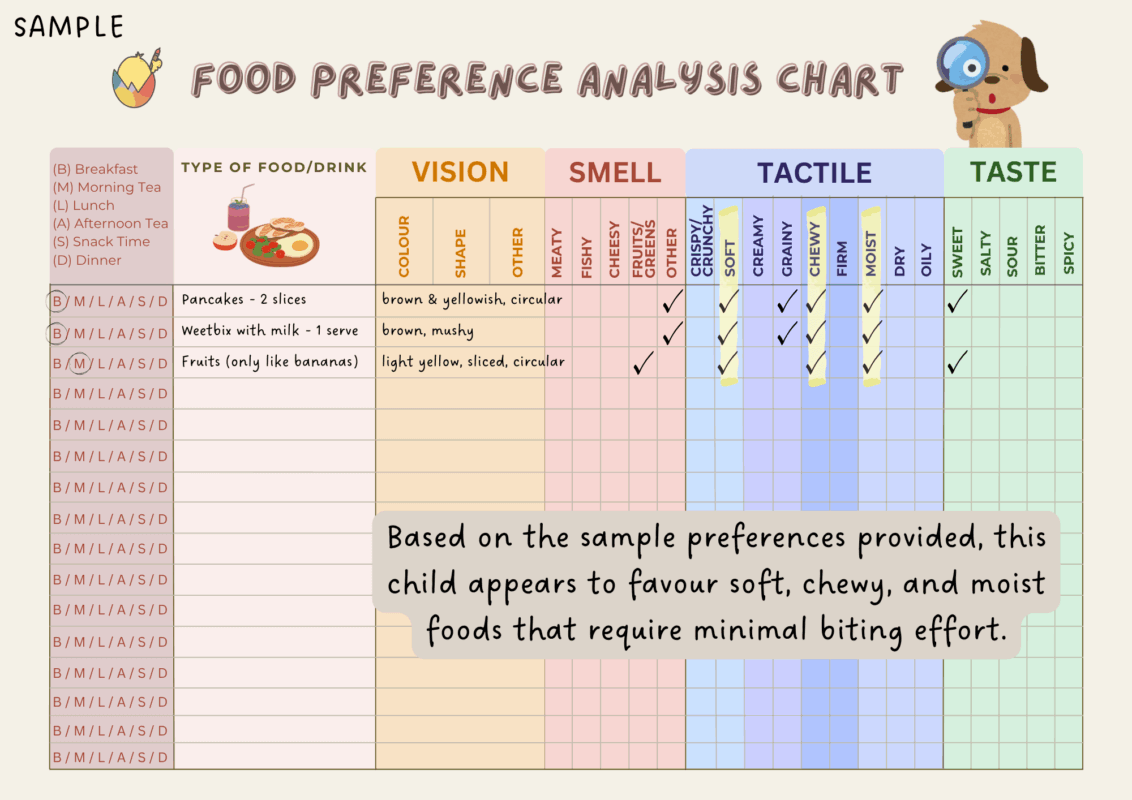Eating is a daily activity for all of us, yet some children may develop strong food preferences early in life, leading to variations in their diet.
The Food Preference Analysis Chart is a practical, problem-solving tool designed to help you identify common features shared among the foods your child enjoys. This insight can assist in planning and facilitating successful food trials.

This tool supports you in exploring the specific characteristics your child prefers in food, across the following sensory categories:
- Vision – appearance, colour, shape
- Smell
- Tactile/Texture – e.g., crunchy, soft, smooth
- Taste – e.g., sweet, salty, savoury
By analysing your child’s preferred foods, you may begin to notice consistent patterns — such as a preference for crunchy textures or mild flavours. Once these preferences are recognised, you can introduce new foods that share similar features, gradually broadening your child’s food repertoire in a supported and thoughtful way.
Use the chart to list the foods your child currently enjoys and identify their sensory features.
Tick the relevant boxes or write brief comments about the sensory characteristics of each food. After completing the chart, review your entries to identify which features occur most frequently— for example, a column with the most ticks.
These shared characteristics will help guide your selection of new foods to trial that align with your child’s existing preferences.
Important Note:
Helping children learn to eat is not only about nutrition — it’s also about fostering a positive and confident relationship with food.
Research shows that children are more likely to explore and accept new foods in a low-pressure, supportive environment with positive social interactions during mealtimes.
For further information and tips, feel free to refer to our HatchDraw Children Resources on eating and feeding development.
However, if your child presents with any of the following red flags, please consult your GP or a feeding therapist:
- Ongoing weight loss or difficulty gaining weight
- Gagging or coughing during meals
- Avoidance of entire food textures or food groups
- A very limited food range (fewer than 20 different foods)
Professional support can play a crucial role in helping your child feel more comfortable and successful at mealtimes.

